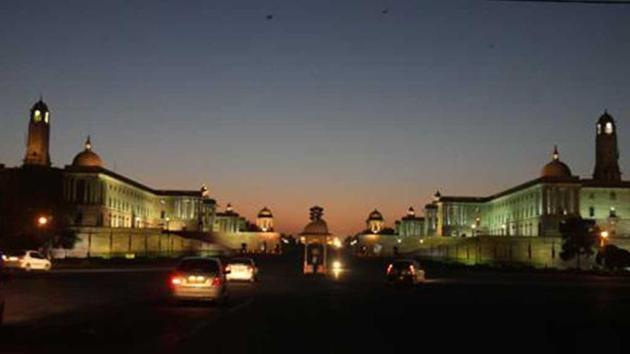What 2018 taught us about how not to reform the Indian State
As India heads to the polls, 2019 is likely to witness renewed promises, across party lines, of “maximum governance”. But achieving this goal will require the new government to resist the impulse for seeking quick fixes and confront head on the limitations of the current reform imagination.
From the (now botched up) attempt to introduce lateral entrants into the government, the launch of new schemes like the Ayushman Bharat and Aspirational Districts Programme, unveiling indices ranking states, districts and villages on every conceivable indicator to promote competitive federalism to the accelerated implementation of direct benefit transfer, New Delhi’s policy elite spent much of 2018 tinkering with policies and introducing schemes to strengthen the struggling Indian State. Underlying these seemingly disparate reforms are important, unresolved and deeply contested questions about the nature, role and function of the bureaucracy and what it will take to strengthen its capacity and capability to deliver public services. Arriving at a blueprint for reforming the Indian State requires confronting these questions and carefully navigating this contested terrain.

Generalist vs Specialist civil service: In the summer of 2018, the Government of India advertised to recruit 10 lateral entrants (experts in specialised fields) at joint secretary level positions. Although the implementation has been botched up, the reform raised important questions about the role of “expertise” in what is considered to be an increasingly complex policy environment. The debate focused on the trade-offs between professional expertise and administrative, field-based experience that our current generalist civil servants bring to policy making.
It also raised questions about recruitment, trainings and promotion systems and the need to incentivise specialisation in the course of a civil servant’s career. But if expertise is what’s missing from policy design, then reforms must confront a bigger institutional challenge: the hierarchical, silo-driven approach that reduces complex, multisectoral problems into one-size-fits-all schemes. Expertise will only improve policy-making, if policy makers can absorb ideas, broker political compromises and experiment with intersectoral approaches. This is the antithesis of the current bureaucratic culture. But without confronting this reality, specialists through lateral entry or internal reforms are unlikely to solve the problem of “expertise” in policy making.
Provider vs Regulator; Technology vs Human Resources: The launch of Ayushman Bharat in October 2018 brought into sharp focus an important and contentious question about the role of the State and its welfare function: should the State “provide” public services (by running, schools, hospitals etc) or instead finance citizens (through direct cash transfers, health insurance programmes and public-private partnerships) and regulate private providers.
The argument for financing and regulating rather than direct provisioning has emerged from a deep frustration with persistent State failure to deliver. The architectural choice being made is based on the premise is that the only solution to the broken Indian State is to bypass the unruly and incompetent bureaucrat. A related debate was had over the role of technology-enabled reforms like Aadhaar linked direct benefit transfers.
But debates on the role of the State and its relationship to technology must confront an inconvenient reality: complex tasks such as financing and regulating the private sector even when aided by technology require investing in bureaucrats, not bypassing them. Take the example of health insurance where pricing and fraud regulation is critical for ensuring that a patient receives adequate treatment. This requires, at minimum, investing in a skilled workforce that can analyse insurance data and build a regulatory architecture with the ground level workers to deal with caseload and enforce decisions. In sum, fixing the Indian State requires investing in its bureaucrats not bypassing them.
Centralisation vs decentralisation tug of war: Despite the rhetoric of “co-operative federalism” and the regular unveiling of rankings and scores to promote competitive federalism by the Niti Aayog, 2018 witnessed a growing attempt to centralise financial and administrative power. From the currently aborted attempt to introduce simultaneous elections across national and state governments to the terms of reference prepared by the Union governments for the 15th Finance Commission, which seek to bias the commission in favour of a centralised financial architecture, the game for 2018 was to recentralise power in New Delhi.
India has historically been a centralised State. But the early rhetoric adopted by this government of co-operative federalism and the adoption of the 14th Finance Commission indicated the possibility of a new phase of decentralisation. In 2018, however, the pendulum slowly swung back toward centralisation. This poses an important question that reforms of the Indian State must confront: can a centralised State be genuinely responsive, agile and accountable to the needs and priorities of citizens? And, can a country as large and complex as India build a welfare State without strong, empowered local governments?
As India heads to the polls, 2019 is likely to witness renewed promises, across party lines, of “maximum governance”. But achieving this goal will require the new government to resist the impulse for seeking quick fixes and confront head on the limitations of the current reform imagination.
Yamini Aiyar is president and chief executive, Centre for Policy Research
The views expressed are personal






